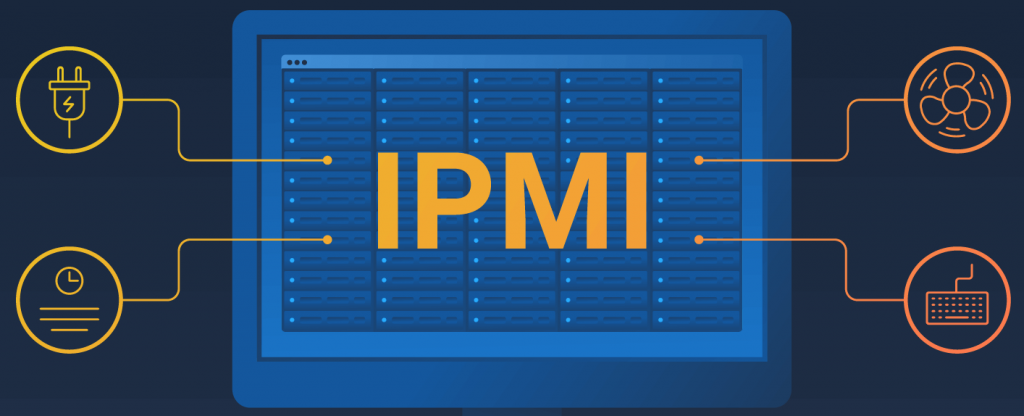A Baseboard Management Controller (BMC) is an embedded computer that can access and control a server’s resources and uses remote Intelligent Platform Management Interface capabilities to increase efficiency. Still, it can be hacked anytime, posing security risks. IPMI is a software-neutral approach that functions independently from a server’s CPU, Operating System (OS), and the BIOS.
Devices with IPMI exposed can be compromised entirely at the BMC level. For instance, if cybercriminals and hackers access the IPMI, they can reboot the system, install a new operating system, and access data, bypassing any operational system control. Since IPMI can also allow remote console access, hackers may also be able to modify the BIOS. IPMIs typically have default passwords.
These passwords can randomly be obtained from a root-compromised server. If someone gets a hold of these passwords, they can access other hosts in the IPMI-managed group. So, for beginner webmasters, IPMI is an interface that helps network managers manage their servers. It was launched in 1998 by the IPMI Forum, which hosts over two hundred vendors in today’s marketplace.
The IPMI promoters encourage equipment vendors and IT managers to consider a more modern systems management interface that can provide better security, scalability, and features for existing data centers and be supported on the requisite platforms and devices. On that note, the DMTF Redfish Standard is an example of one such interface. Let’s learn more about IPMI in detail.
Knowing What An Intelligent Platform Management Interface (IPMI) Can Provide
As mentioned, Intelligent Platform Management Interface (IPMI) is a set of standardized specifications for hardware-based platform management systems that allows controlling and monitoring servers centrally. In other words, IPMI is a form of Out-Of-Band (OOB) management, meaning it can perform management tasks regardless of the server’s location or installed operating system software.
IPMI is used by the server’s Baseboard Management Controller (BMC), an embedded computer, to provide OOB management. The BMC can access and control the server’s resources, including memory, power, and storage. Additionally, it supports remote boot and server environment monitoring. The system is usually implemented as a network service on a dedicated Ethernet port.
This is especially possible on the Ethernet port for the server, sometimes labeled the “management port.” Once you connect to the IPMI manager via the LAN or the internet, the manager utilizes IPMI over IP (Internet Protocol) to communicate with the BMC on the server motherboard. The BMC then uses the system bus to connect with the BIOS, CPU, OS, power supply, and sensors.
At the same time, this allows the CPU administration speeds, fan speeds, voltages, temperatures, event logs, and server rebooting. For your information, there are many products on the OS level that are designed to help network admins manage their servers, some more costly than others. The hosting industry came together to create a joint management standard, an open standard.
The General Intelligent Platform Management Interface (IPMI) Features
As mentioned, a BMC is a dedicated chip or controller that runs IPMI. It defines how admins control system components and monitor system sensors and hardware. With this, admins can monitor the health of their servers for events related to fans, voltages, temperatures, hardware errors, and chassis intrusion. Likewise, hardware errors could be those related to either memory or network.
Logs of these events are used to launch remote management and recovery. In most cases, the vendors that make up the IPMI forum work in unison to constantly update and implement management specs for things like telecommunications equipment, network equipment, storage devices, and servers. Recent advancements have included VLAN, security, and blade support.
The IPMI software-neutral approach functions independently from a server’s BIOS, CPU, and operating system. Even when the OS hangs or the server is powered down, IPMI allows admins to diagnose, monitor, manage, and recover their systems. Its alert system can notify admins before hardware issues happen. A handy feature of IPMI allows admins to use multi-layer passwords.
As well as other admin privileges together with on-the-wire encryption and authentication. IPMI uses an agentless management subsystem, effectively allowing it to run separately, independent of the condition or type of BIOS, CPU, and OS. This eliminates limitations associated with OS-dependent agents (agent-based). There are a few reasons why IPMI is critical in its ability to execute.
They are as follows:
- Monitoring and supervising servers
- Recovering and restarting servers
- Logging server states
- Listing all server inventory
As a rule of thumb, for systems compliant with 2.0, communication can be facilitated via serial over LAN. Those systems also typically include KVM over IP and remote virtual media. In addition to utilizing a separate dedicated management LAN connection, it permits a “side-band” management LAN connection. This helps to reduce costs but at the expense of limited bandwidth.
At the same time, it also helps with checking the event log and performing power cycles. If you need to install an OS remotely, you’ll need a complete out-of-band approach. BMC chips are developed and marketed by several vendors. Some embedded apps may have limited memory, requiring optimized firmware code. Some BMCs are highly integrated in solutions delivery.
Be that as it may, they can provide incredibly complex instructions, offering complete out-of-band functionality. The BMC is essentially the intelligence in this architecture, managing the interface between the platform hardware and system management software. BMC connections over LAN might or might not be encrypted. This depends solely on the security protocols the user creates.
There are six main benefits to IPMI:
- It constantly monitors server health and issues advanced warnings of possible system failures.
- IPMI acts independently of the server and is always accessible.
- Configuration changes are easy to make.
- It enables the user(s) to access and make BIOS changes without operating system access.
- Server recovery is possible even if it is switched off.
- It is a universal standard that is supported by the vast majority of hardware vendors.
Usually, setting up role-based access to comply with current security issues is possible. Admin, operator, and user roles can be utilized. Technically, the user role is limited to read-only access, plus they have no option to remote control power cycles or view or log into the main CPU. This prevents hackers from accessing confidential information and gives them no control whatsoever.
In contrast, the operator role can be utilized when a system hangs, allowing it to create a dump file and either reboot or perform a power cycle. Admins can configure the BMC itself. In addition to the BMC, four other vital components support IPMI. Get the IPMI for remote management, public and private network support, free OS re-installs, and SATA, SAS & SSD (like NVMe) storage.
The essential components are as follows:
- ICMB (Intelligent Chassis Management Bus): This interface allows communication between chassis.
- IPMB (Intelligent Platform Management Bus): This extends the BMC management controllers while complying with a communications protocol.
- Intelligent Platform Management Interface Memory: This is the IPMI’s Sensor Data Record, System Event Log, Field Replaceable Units, and Repository that stores data.
- Platform Management Interface Communication Interfaces: These consist of local system interfaces, a serial interface, an ICMB, a Local Access Network (LAN) interface, and a PCI Management Bus.
IPMI should be restricted to private management networks to prevent unauthorized access and protect critical data. If IPMI is not in use and cannot be disabled on your device, or if there is no choice but to run IPMI on a public network, then block its MAC address to limit access to your Virtual Local Access Network (VLAN) only. VLAN is a subnetwork that groups device collections.
This usually happens on a separate physical Local Area Network (LAN) connected computing device. Trenton Systems uses the latest IPMI utilities and has software engineers on staff to bolster our systems’ security features to protect critical data at the highest level. You can learn how to quickly change the BIOS around IPMI and other features per customer requirements.
Summary Notes:
It’s important to realize that we’ve been in the web hosting industry for over a decade, helping hundreds of clients succeed in what they do best: running their businesses. We specialize in Virtual Private Servers (VPS) and dedicated servers. Due to various security concerns, like cipher zero, installing your IPMI management port on a reliable connection (LAN or VLAN) is recommended.
Our Virtual Private Servers all feature high-performance Xeon processors and SSD storage in a RAID10 configuration to optimize the server’s performance. As a result, this dramatically enhances visitor experiences on your website. Equally important, that speed is backed by unparalleled 24/7 support, featuring both outstanding response AND resolution times to maximize uptime.






